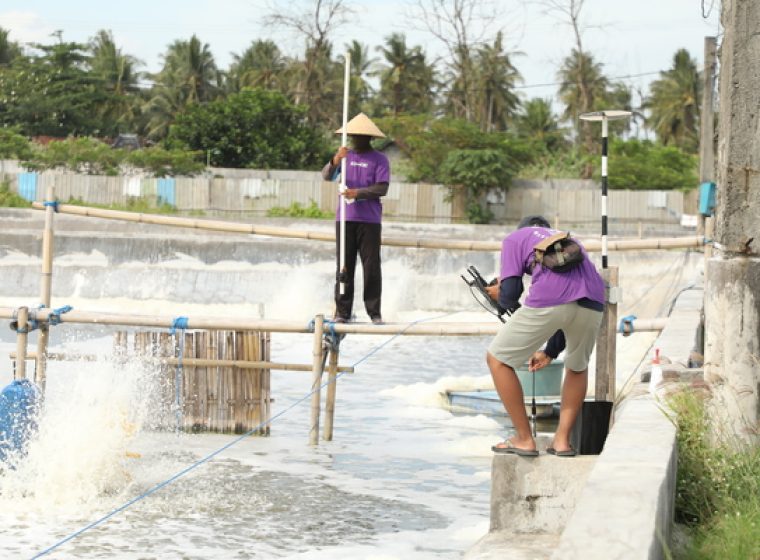
A declining shrimp price presents a major challenge for farmers to achieve high profitability. Therefore, an economic strategy in shrimp farming is necessary to address this issue.
Managing operational costs (BOP) becomes the primary key to optimizing profitability when shrimp prices are declining. In this situation, carefully considering operational costs concerning shrimp prices per size becomes crucial.
Furthermore, several other strategies can be applied by farmers. Find out more about them in this article.
Also Read: Vannamei Shrimp Feed Management Tips for Your Anti-Loss Cultivation!
Strategies to Face Declining Shrimp Prices
1. Calculation of Operational Costs (BOP) and Shrimp Prices per Size
As the vannamei shrimp harvesting approaches, farmers need to consider various factors, such as operational costs and shrimp prices per size. For instance, when harvesting at the early DOC stage with sizes ranging from 100-90, considerations of a still-high survival rate (SR) and a low feed conversion ratio (FCR) of around 1.0 are crucial.
With shrimp prices around 43-45 thousand, the estimated production cost is approximately 30-35 thousand, resulting in a margin of about 10-15 thousand per kg of shrimp. However, waiting for shrimp to reach larger sizes could pose significant risks, especially when the increase in price per size doesn’t hold much economic significance.
2. Determining the Cost Price (HPP) at Specific Sizes
Farmers need to calculate the Cost Price (HPP) at specific sizes or DOC stages that yield the best margins. The decision to harvest shrimp should be based on a well-calculated economic assessment. Currently, both small and large-sized shrimp may not necessarily yield optimal profits. Hence, meticulous calculation becomes paramount.
Also Read: Addressing Harmful Algal Blooms in Shrimp Ponds
3. Adjustment to Low Prices
During periods of declining shrimp prices, farmers typically gather information about local and factory prices to compare. They also consider production costs and differences in prices across sizes to achieve the most profitable size. In such situations, recalculating the HPP of shrimp becomes essential to minimize production costs and adapt to lower shrimp prices.
4. Cultivating with Efficiency and Precise Calculation
Financially sound farmers persist in production to avoid being burdened by fixed costs. When facing a scenario of declining shrimp prices, recalculating production costs against shrimp prices becomes crucial. Cultivating with care and meticulous calculations helps minimize losses.
In the face of a trend of declining shrimp prices, farmers must re-evaluate economically. Comparing production costs against shrimp prices is a critical step in maintaining profitability.
Also Read: Dynamics of Vannamei Shrimp Market and Its Influence on Prices
Get the Best Vannamei Shrimp Price at AquaLink!
In coping with fluctuating shrimp prices, farmers need to adopt an economic strategy that involves careful calculations of operational costs and shrimp prices per size. With careful planning, they can minimize losses and maintain profitability in the dynamic shrimp farming industry.
If you intend to enter the global market and get the best vannamei shrimp prices, you can collaborate with AquaLink! AquaLink is an integrated maritime supply chain that connects farmers and facilitates harvest sales with the best quality and prices.
Contact the AquaLink Team at contact@delosaqua.com or submit through the contact form on our website at www.delosaqua.com/aqualink to get the best prices for your shrimp!




